Vegetables
Are you thinking of grow some radishes in your garden this season ? There are many different types of radish to choose from depend on your hardiness geographical zone . In this clause , horticulture expert Kaleigh Brillon share her preferent radish types , with name and pictures of each !
content

If you ’re new to horticulture , someone has probably recommended you grow radishesbecause they ’re so well-heeled . Sprinkle some come , give them some weewee , and voila ! you may have radish quick to reap in less than a calendar month . It ’s quite the sureness boost for a new gardener .
Even if you ’re a seasoned nurseryman who bed an easy win , there are many types of radishes to choose from that you ’re sure to love ! We ’re talking a rainbow of colors , from bluff reds and purples to delicate pinks and yellows . There are even black and green salmagundi that are sure to spice up up your salad .
Let ’s appear at these different radish to originate in the garden . Each one will bring something completely dissimilar and unique to your maturation this time of year .

Red Radishes
Sometimes , you ca n’t mystify the classic . You plausibly call up of crimson varieties when you opine of radishes , and they ’re potential what ’s sell at your grocery memory board . You might guess they ’re overrated , but they ’re a classic for a rationality !
They ’re not all your typical stave , red daikon ( say that three time tight ) . You ’ll want to originate some unique varieties in your garden ASAP . Read on to learn a little more about the atypical typical daikon .
Cherriette
Red on the outside and blank on the interior , the Cherriette radish is precisely what you ’d ask , and it ’s a good choice for a first - time radish grower . It ’s quick to reap in about 24 days and wo n’t lose its mild flavor if you leave it in the ground a morsel longer than expected .
Grow these radishes in full sun in the springiness for the best solvent . Plant seeds every one or two week to have a constant provision of radishes to crunch on . Since they take so little prison term , these radishes are perfect prospect for succession sowing .
As with most Raphanus sativus , a good control surface tilling before you plant come will assure there ’s room for the Cherriette to grow . In the line of growing your Cherriette , apply a picayune fertilizer about 2 weeks after sprouting to give the roots lot of nutrients for full ontogeny . These are suited for wherever your typical radish would go in the kitchen .

Cherry Belle
TheCherry Belleis an heirloom variety from Holland you wo n’t want to overleap . With a crisp crush and a mild flavor , you ’ll require to eat this one raw on salads . This frost - kind variety can be planted in early spring and will be ready in about 24 days . chronological succession plant it through summer for continual radish goodness !
If you adjudicate to plant Cherry Belle betimes in spring and you get a little snap frost , there should be no problem at all . The variety is somewhat resistant to low-cal frosts . That makes it good for a downfall harvest too !
you may leave your bulbs in the solid ground to get a footling larger than the 3/4 in to 1 inch sizing . I ’ve allowed them to acquire to a 2 inch diam with success ! They also are pretty traditional feel - wise , but you could quick pickle them as a garnish for your favorite barbecue meats for some complexity .
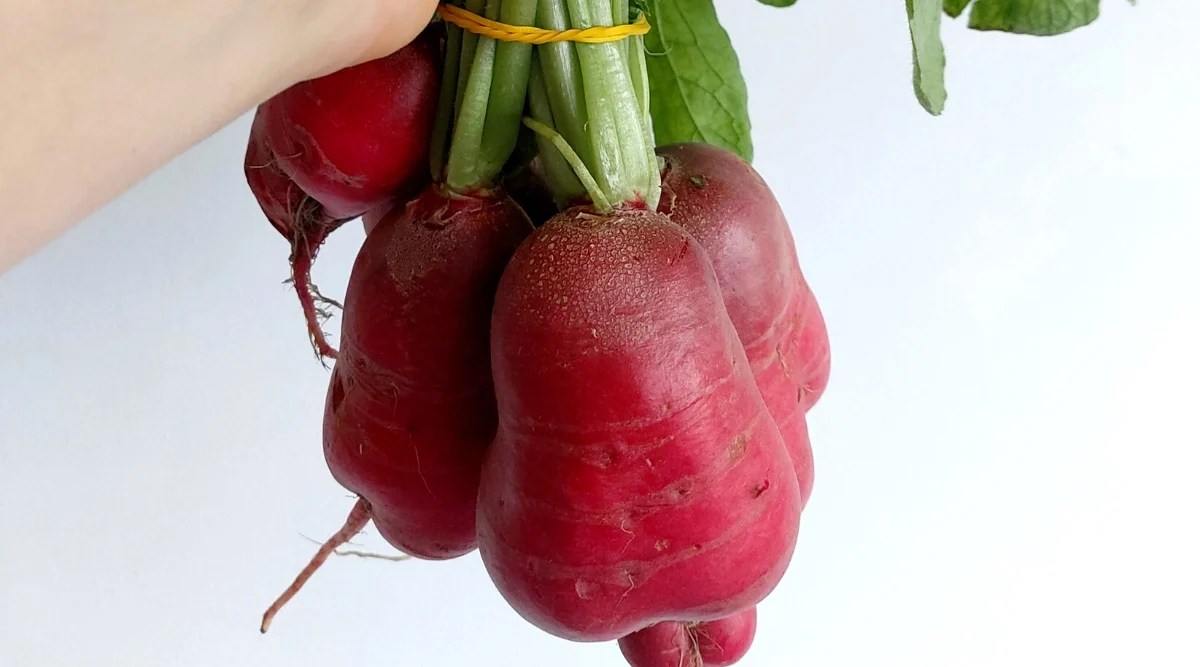
Crimson Giant
Tired of dainty radishes?Look no further than the Crimson Giant , which can grow up to 2 inch in diam ! Its large sizing and mild flavor make it perfect for sandwiches or as the wizard of the salad . Like the other two varieties we ’ve talked about up to this power point , prove planting them with your kids to get them addicted to horticulture too !
This radish likes the cool weather in spring and descend and takes 28 days to mature . It ’s tolerant of frost , so you’re able to grow them in good order up until the first freeze . With 2 1/2 to 3 1/2 column inch leaf top , you may even revel the greens , bare-ass or lightly cooked .
Try these interplanted among peas , lettuce , tomatoes , and among your favorite herbs . Due to their minor size , they wo n’t compete for nutrient , and you ’ll have spate of shade from other plant in affectionate atmospheric condition .
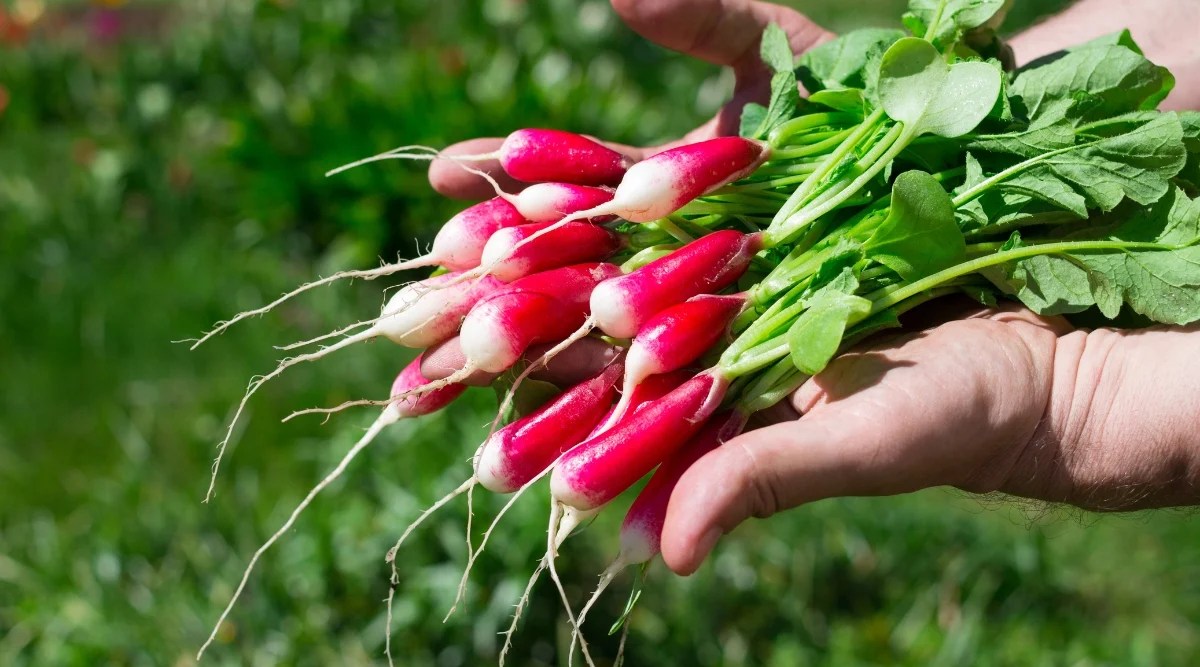
De 18 Jours
Guess how long this speedster takes to grow ? If you guessed 18 days , you ’re right ! De 18 Jours , or “ of 18 days , ” are arrant for raring gardeners who just want a radish already . Jeez ! These are one of those frost brave eccentric that can deal and other planting for unforesightful season gardeners .
This miscellany has a thin oval shape rather than your typical orotund red radish , so it ’s a sound alternative if you want something a little dissimilar . get it in the spring until the temperatures reach 75 ° F ( 24 ° C ) . They ’re freeze broad , so you may jump ahead of time with these .
The substantial greens on these tasty beginning are cracking for eating too . Saute them like you would spinach plant or another interchangeable delicate greens . They are comparable in flavor to those .
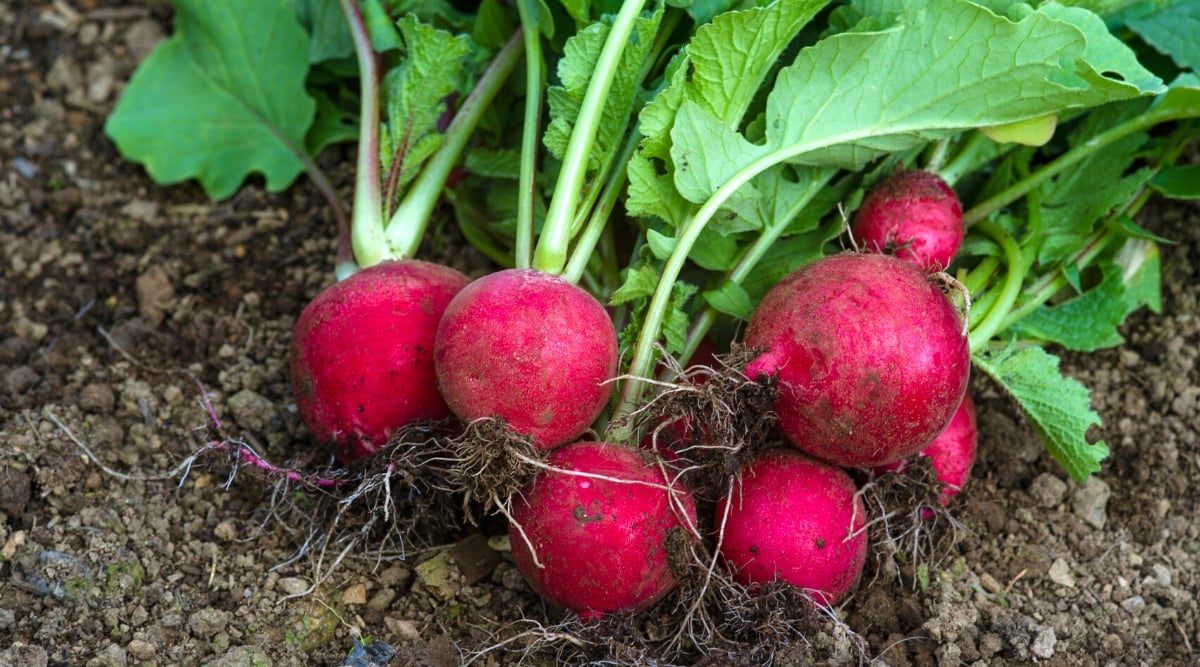
Early Scarlet Globe
The poster child of all radish plant , the Early Scarlet Globe is the one you ’ve probably had before . It ’s mild and crunchy and tolerate fond weather so you could grow this one into summer , unlike many others . On the flip side , it can handle frost , so both southern and northern nurseryman will enjoy growing a crop .
The typical sizing is about 1 in , with greens growing up to 6 inch grandiloquent . Grow these in full sun in the spring or surrender seasons . Perfect for succession sowing , those with prospicient spring and declivity season will glean much from continuous harvests .
Early Scarlet globe have the stark , idyllic radish shape and size . Therefore , use them just as you would your typical types .
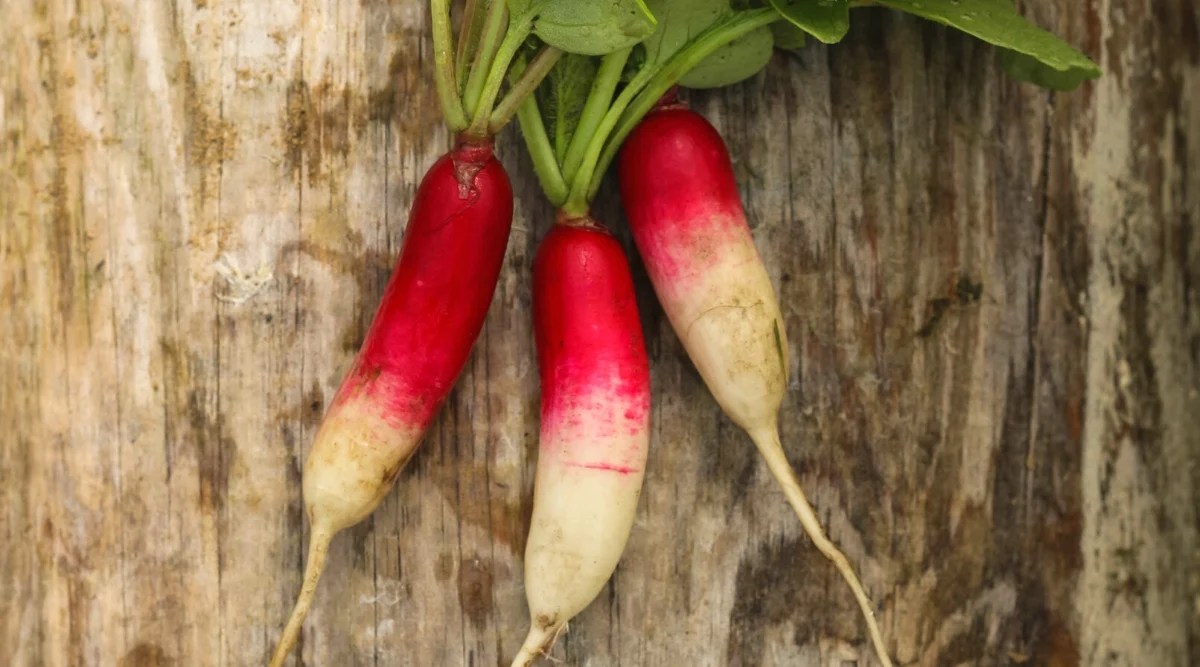
Fire and Ice
Despite the name , this Japanese radish is mild and sweet-scented . It ’s half crimson and half ashen , slender , and grows to be about 4 inches long . You ’ll want to service this one refrigerated to bask its sweet relish . Slice one up and throw it in your salad , or eat it fresh in a sandwich .
Fire and Ice isready to eat in about 25 days . you’re able to plant them in early leaping , late summer , and fall if you do n’t have any early frosts . It ’s not frost - tolerant , so keep an center out for the weather condition ! That being said , those with short seasons may want to arise some other variety .
If you ’d care to expand the shelf life of these , remove the leaves , wrap the roots in plastic , and enjoy as needed . This will keep them fresh for up to 5 days in the icebox .

French Breakfast
French Breakfast radishes are frost - liberal but can also stand a little heat , bring in them perfect for gardens with temperamental springs . That make them fantabulous for farsighted - time of year cultivator in area where summertime fall on quickly .
Grow themin spring and fall in container or in the ground , and in 28 days or so , you ’ll have beautiful , slender red and white radishes . They ’re about 1 in in diameter and can pass up to 4 inches long . They ’re mild and peppery , giving your solid food a gentle kick .
I wish to slice these up and put them on high mallow pledge with a little leaf mustard . It ’s a piquant way of life to set off the 24-hour interval for sure ! If that ’s not of interest to you , adjudicate pickle or braising . Stir fries also work to serve the delicious smack of French Breakfast .

French Dressing
This radish plant is similar to the French Breakfast variety but is a little shorter and thinner . They ’re more red than they are white , but still have a delectable peppery flavor . This form is great in salads with , say , some French dressing ?
They can take up to 35 mean solar day to harvest , make them a bit on the slower side in the human race of radishes , but they ’re worth the wait ! Harvest them when they ’re 2 inch long and just under an inch wide .
This one is very exchangeable in terms of manipulation when compared to French Breakfast . Therefore , it ’s suited to all the same culinary applications . Aside from all the ways you could set them , you could certainly savor one straight from the garden .

German Giant
The German Giant is a globe - shaped motley with hopeful red skin and stunning white insides . It can produce to be 1 ½ to 2 inches in diameter and has a mild but nippy flavor . That means you get a large radish plant , and all within one calendar month !
Many variety show become pithy like a lemon when they get too big , but that ’s not a problem with this giant . you could let it hit its full size without give the full tang . And we do n’t even have to tell you how salutary this one is for interplanting and taking over sowing .
essay eating this one in salads , on sandwiches , or enjoy one the European way . just slice up one up , and throw it on deliciously butter crusty bread .

Giant of Sicily
While I ’m on the theme of giant radishes , permit ’s look at this heirloom variety hailing from Italy . It ’s a classical spherical Japanese radish with red tegument and white flesh , but this one can reach 2 inches in diameter ! It ’s icing - tolerant and can be spring up in spring and descent , necessitate about 35 twenty-four hour period to reap . The tone is on the sweet side , so those who do n’t like the spiciness of Japanese radish will appreciate this one .
Of of course those roots are edible , but so are the green ! They are finespun enough for pesto , and flavorful enough for a unaccented saute . If you ’ve allow them go , and you pull one that ’s huge , do n’t worry ! nurseryman cover the flavor stays intact even if they ’re exit in the garden for longer period .
As an Italian heirloom , these guy can handle a little bit of heat and a little number of hoar . Warm conditions does n’t make them bolt , which means it may be easier to let them go than it would others . Therefore , keep an heart on them if you require that just - mature - enough flavor .
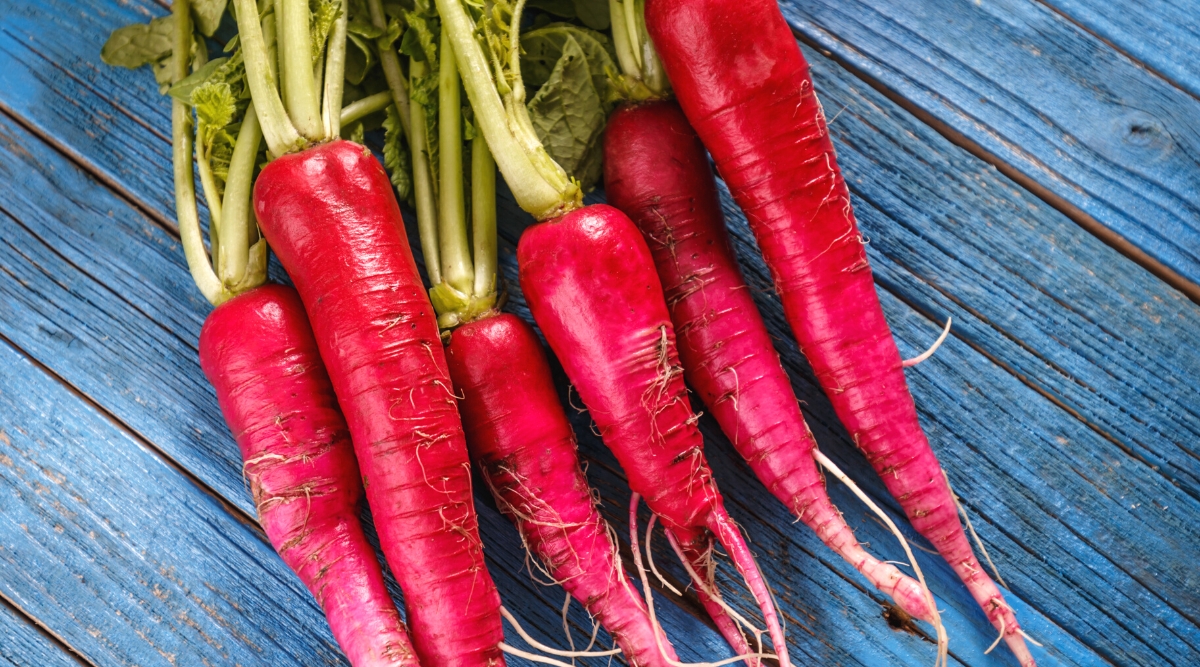
Long Scarlet
This radish variety is long and scarlet , but maybe you could have pretend that ! It ’s a red-faced radish plant that thinks it ’s a carrot with a lithe root that reaches up to 6 column inch long . It ’s sweet and not very mordacious . Add this to the list of tame radishes for radish - hater !
It will be ready to harvest within 30 days and can be sown in early spring and late summertime . They make a great bound or fall planting , and can farm all year round in milder area . Due to its comfort of cultivation , Long Scarlet has been a favorite among growers since the 19th C .
Hailing from Ohio , the daikon also has the plebeian name Cincinnati Market radishes , Extra Long Scarlet Short Top radish , Long Scarlet Cincinnati radishes , Cincinnati Glass radishes , and Cincinnati Glass carrots . They were often grown in glass greenhouses in the 1800s , giving them their glass moniker .

Perfecto
This one is wonderful if you need a peppery radish that packs a slug . This variety is perfectly Earth - determine with a white interior and can reach the size of a golf game ball . It grow on the faster side , get to maturity in 25 days . When it reaches 1 inch in diameter , it will be crispy when you bite into it .
Perfecto radish are well suitable to Mediterranean - corresponding climates , which can be spicy , cool , arid , or humid . Therefore , they ’re pretty adaptable to exchangeable areas of North America . The foliage are tinct with Red River along the stalk and leaf veins , adding a footling bit of semblance to your cool conditions garden .
The seeds of Perfecto sprout readily , and produce tons of piddling text radish . glean them diminished or great — they ’ll keep a perfect visage no matter when you take them out of the ground .

Red King
Perhaps the king of all radish , this gargantuan variety will give you quite a little to eat ! It ’s a type ofdaikon radishwith bright red tegument and crispy white flesh . The theme can grow to be 8 inches long and a walloping 2 ½ inches wide ! All this depends on how thickly you sow your source .
This variety has some heating tolerance and is irksome to bolt , so you could plant them throughout springtime and well into summertime . They take a bit longer to harvest , though — you’ll have to hold back about 53 day ! The flavor is peppery with a hint of sweet .
They will maintain their flavor if you leave behind them in the undercoat beyond their initial matured time . Add to this their sluggish - thunderbolt nature , and you ’ve got a bully radish that can grow almost anywhere in the temperate season . When you harvest , use a forking to dip under the root word and lever it up . These are finespun radishes that can bring out during the harvest process .
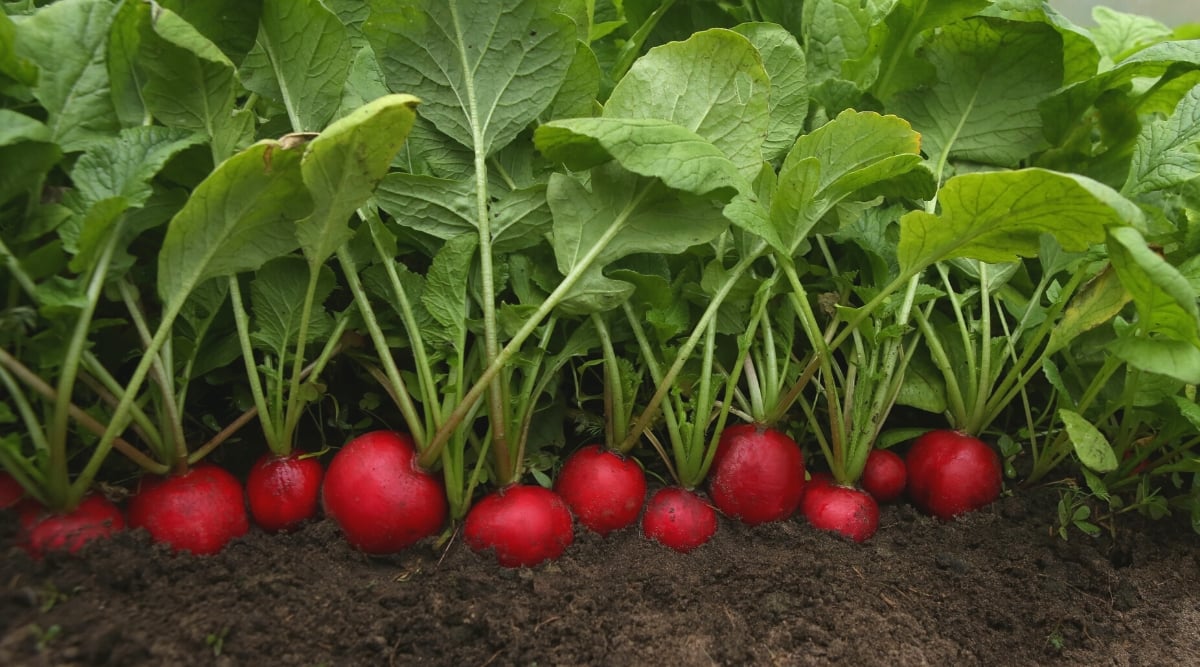
Rudolf
The Rudolf radish is1 in in diameterand is almost a perfect empyrean every prison term . tattle about satisfying ! The cute orotund crimson radishes look a lot like a sure fly reindeer ’s nose , and they have a zesty , peppery taste . imbed these in the cool parts of leaping and fall , but you may also maturate these into summertime until it gets too raging .
You know you could rely on Rudolf , peculiarly when you consider the fact that it won a the Award of Garden Merit from the Royal Horticultural Society in 2008 . If you desire to get the most out of your harvest , you could employ the Green to add together a turn of spice to your favorite salad .
In just 25 days , you ’ll have the cute little radishes that have multiple function in your kitchen . Succession inseminate them through spring , and if you endure somewhere cool enough , through summertime too .

Saxa 2
Saxa 2 radishes are a European multifariousness that scourge no time . These world - shaped radishes will be quick in at least 18 mean solar day . Like other crimson radish , these have white flesh and a delightfully racy flavor with a tad of sweetness . You ’ll want to nosh on these in the garden , but they ’re also toothsome in many dishes .
You ’ll know it ’s time to reap when the leafage are just 4 inches grandiloquent , and the fiddling ruby globes pop out of the top of the soil . Saxa 2 is forgive , and suited for fresh gardeners , and Thomas Kyd gardeners too ! Even experienced grower will enjoy this one .
If you prefer a Raphanus sativus that has more body , and more greens , this might not be your pick . But the ability to ecological succession seed these gorgeous base throughout spring and fall will give you lots to work with .

Sichuan Red Beauty
This radish truly endure up to its name ! It ’s a reddish - purple at bottom and out , much like a beet . It ’s a Chinese change that is great for pickling , splash - frying , or sliced in salads for a gorgeous pop of colour . There are so many antioxidants in each of these radish , you ’ll have much to be thankful for when you employ them in your kitchen .
The Sichuan Red Beauty is oblong and will hit about 2 inch in length and diam . Plant it in late summertime or early fall and harvest it as the temperatures cool down . This sort is n’t urge for spring planting , and much prefers the cool of fall ( like a beet does ) .
The name of the radish indicates spicery , which is reliable to form ! Therefore , it may not be everyone ’s favorite snacking radish . If pickled Japanese radish are what you wish , the mysterious crimson hue utter by these is deserving springing for .

Sora
The Sora radish should be your first pick if you desire to grow radishes in a warm climate . They keep their perfect round shape and do n’t become sententious , even if the temperature are a minute warm or they get too big ! They have beautiful pinkish - red skin and white flesh and are ready to reap in 22 day . engraft them from saltation to fall to continually enjoy radishes almost all twelvemonth .
If you endure in an area with moderate summers this is a great option . Sora is also unspoilt for those who have temperate spring and fall season . Those in the tropics and subtropics could probably place upright to inseminate these all class long for uninterrupted radish harvests . Those with poor seasons hold as well !
These are the arrant radish for snacking , salads , and pickle . You may have so many of these , you ’ll find yourself donate them to friends and neighbors . mart gardeners will get much value from a crop of Sora , too .

Sparkler
The two - toned Sparkler radish is half reddish - purple and half snowy . It ’s a spicy radish with a hint of sweetness that you ’ll love to put on any salad . glean it early if you desire to tone down the spice since the longer it stays in the earth , the spicier it gets .
Sparkler radishes take no prison term in the garden ! you’re able to harvest these in just 20 Day , making them an easygoing alternative for those who ca n’t wait to run through them . You ’ll enjoy the spiciness mix with marked sweetness these daikon bring . Roast them , and the sweetness is even more evident .
Among other lily-white backsheesh heirlooms , Sparkler has so much to offer , with potential for succession harvest and interplanting . discombobulate them in with your herbs and tomatoes , and then pickle them up when they ’re quick !
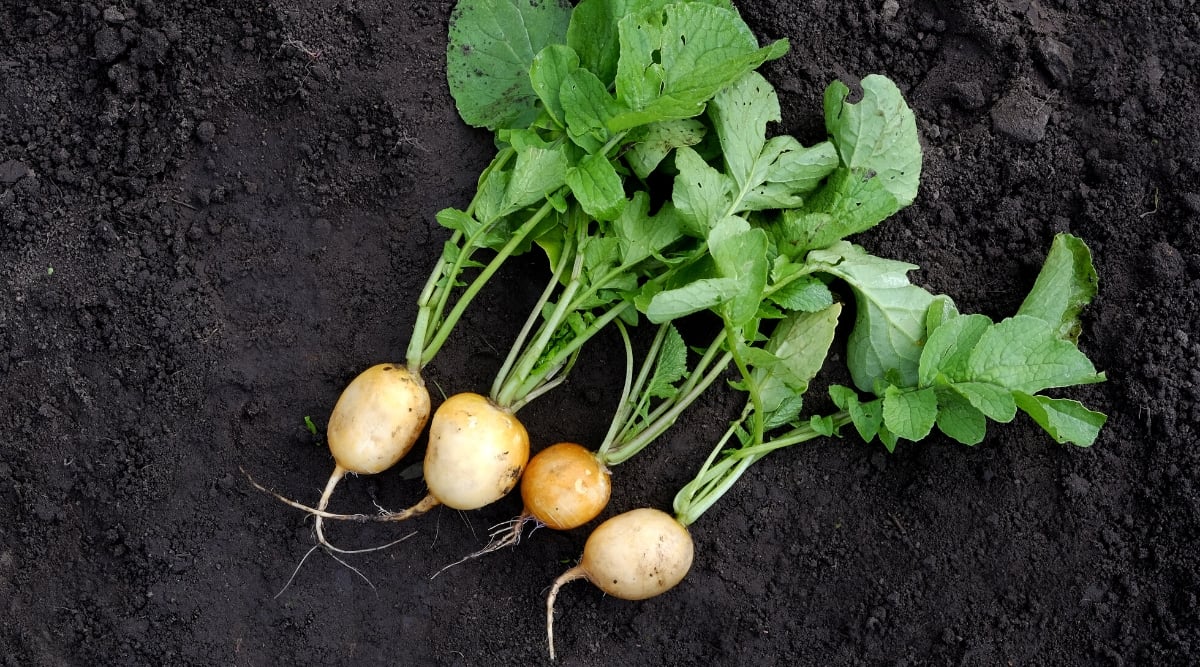
Yellow Radishes
If you’re able to only find red radishes in the foodstuff store , try grow some yellow unity to sum up a little interest to your garden ( and your plate ) . Since there are n’t many alternative , you ’ll know lily-livered radish is truly something special .
chicken radishes run to be mellower , and sweet than your distinctive spicy red radish — as long as they are grown in conditions right for their kind . That often means keep them out of the heat , and monitoring them near the end of saltation and fall for best relish .
Helios
The Helios radish is an heirloom variety from Czechoslovakia . If you ’re concerned in other civilization , you ’ll want this one in your garden ! They ’re globe or European olive tree - mold and have beautiful yellow or beige pelt with white pulp . These are ready to reap in 25 day . Their spice is mild and is a right choice for first - time radish eater .
you’re able to sow seeds of this radish in ecological succession , and it will land you gobs of delicious green and roots . As other radishes may beetle off quick , this one wo n’t , make it an heirloom you’re able to rely on . You do want to keep on top of your harvests , however , as root can split in the reason .
The attention you pay to this one is well worth it ! If you experience the distinctive Raphanus sativus is too spicy for you , grow these and glean them new for the well solution .
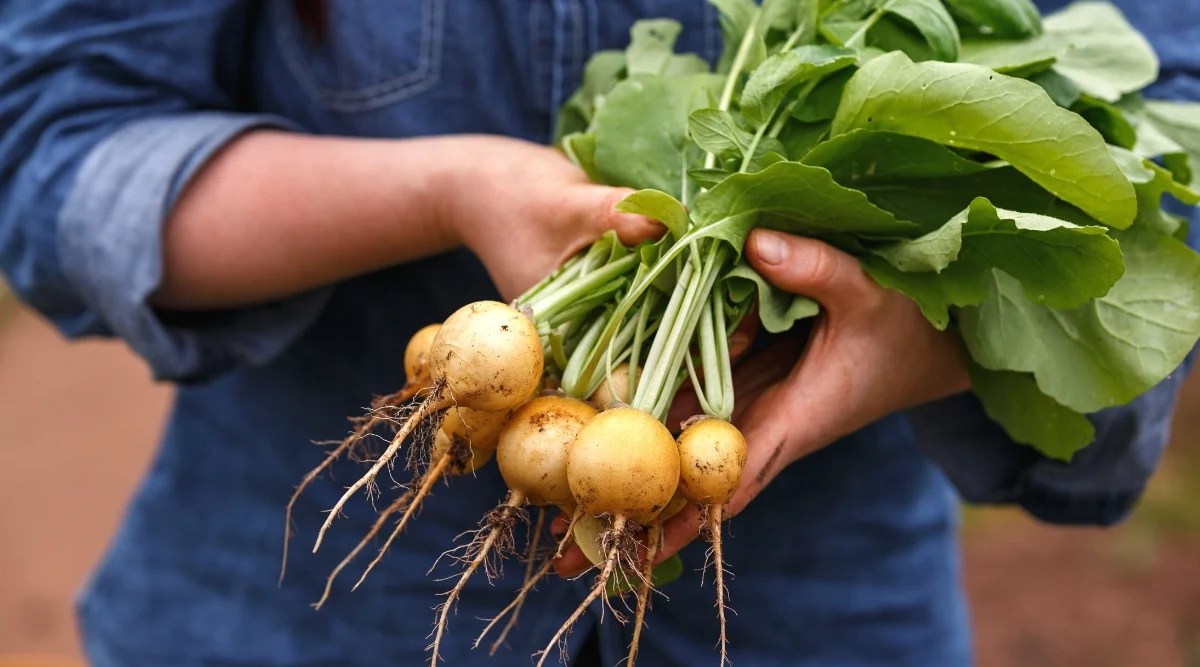
Zlata
Zlata , or “ gold ” in Polish , is an heirloom variety from Poland . Its gold peel is compliment by its white material body and has a barmy flavor , which is milder and earthier than your regular Raphanus sativus longipinnatus . You ’ll get a nice crunch when you bite into the supply ship peel , which is yellow , to tan , and sometimes calorie-free brown .
produce this plant in the spring and into summertime ( and through fall in some sphere ) , and it should be quick in about 25 days . This variety will be spicier if grown in the heat and milder if grown in nerveless temperature , so your spring peck may be unlike than the summer ones !
Since “ Zlata ” is a Polish discussion that means “ lucky ” in English , another outstanding common name for this one is Golden Garden . They are also called Zlata summer radishes due to their power to admit their texture and flavor in warm weather condition . They are slow to bolt too .
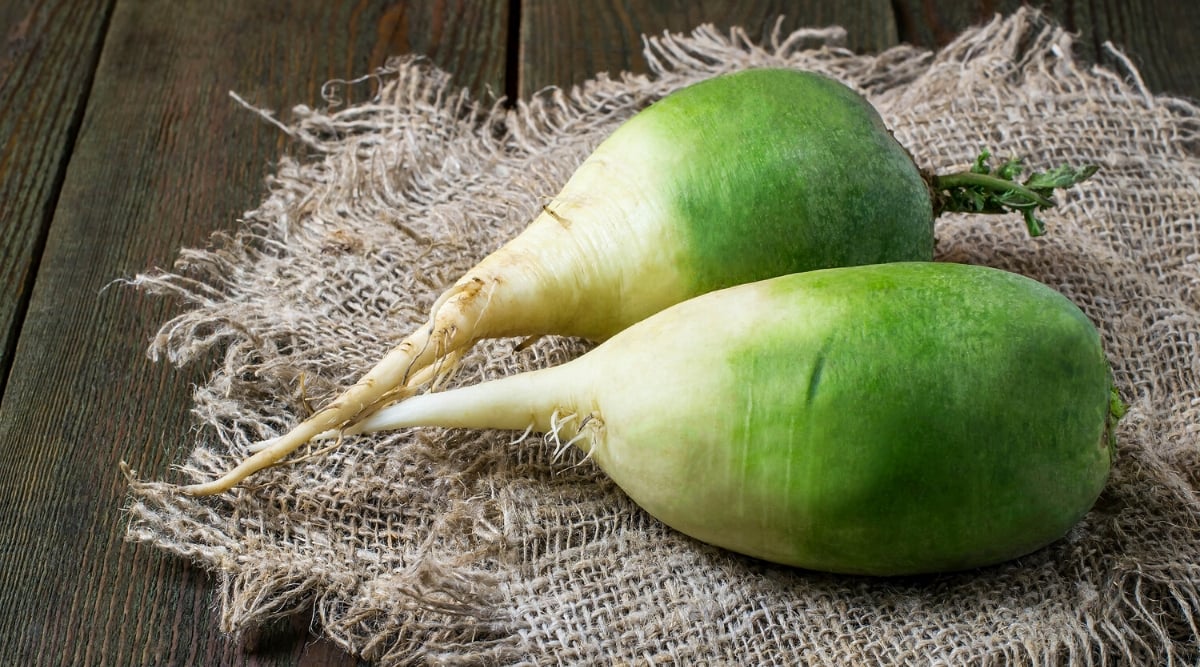
Green Radishes
Have you ever had a green radish plant ? They ’re certainly unequalled ! There are a distich of dissimilar variety to choose from that you ’re sure to love . What you could await is these radish plant will pack a lick of savour as you grow them .
Whether you ’re cultivating them for their roots and super C , or their seed seedpod , you will get a spicy , mustardy radish that you’re able to enjoy saucy , pickled , or roasted . These are adaptable to both lovers of savoury radishes and those that need something mellowed .
Chinese Green Luobo
The Chinese Green Luobo radish is sure to stand out in your garden . The top half is unripe , the bottom one-half is white , and the insides are lightsome green . This mixture is often used in pickling , but you could also misrepresent it up or eat it crude .
This elephantine Daikon Raphanus sativus longipinnatus takes about 60 days to mature and can be harvested when it ’s 6 to 10 inches in distance . It reaches up to 3 inch in diam , so use this one on sandwiches since it take up plenty of place ! It prefers to develop in cool weather and will be quick to bolt once the atmospheric condition heat up up .
Ferment these roots to tame their flavor slenderly if you ’re one of those people that get it on to maturate interesting plants but do n’t want to deal with intense spice . These semen require to be institute deeply compare to other Raphanus sativus ( at 1/2 column inch ) and far apart ( 4 to 6 inches ) due to their size .

Misato Rose
You ’re sure to fall in love with the Misato Rose . The orb - shaped root are monolithic , get up to 5 column inch long and blanket . The skin is light immature and ashen but will surprise you with brilliant blank and Battle of Magenta flesh that resemble a sleeper - dyed T - shirt .
This Raphanus sativus longipinnatus lacks spice up but has great deal of fragrancy to go around . It ’s well planted in the fall to avoid the summer heat . However , there are hybrid varieties out there that have enounce spiciness . If you ’d prefer the intensity of flavor , hybrid are better !
you could sow in these bad boys nearly together and still receive those elephantine roots . Crowding is no emergence . This is a winter Raphanus sativus , which grow more tardily than a spring Raphanus sativus longipinnatus . So be patient , and you ’ll have giant roots to use for whatever you hope .
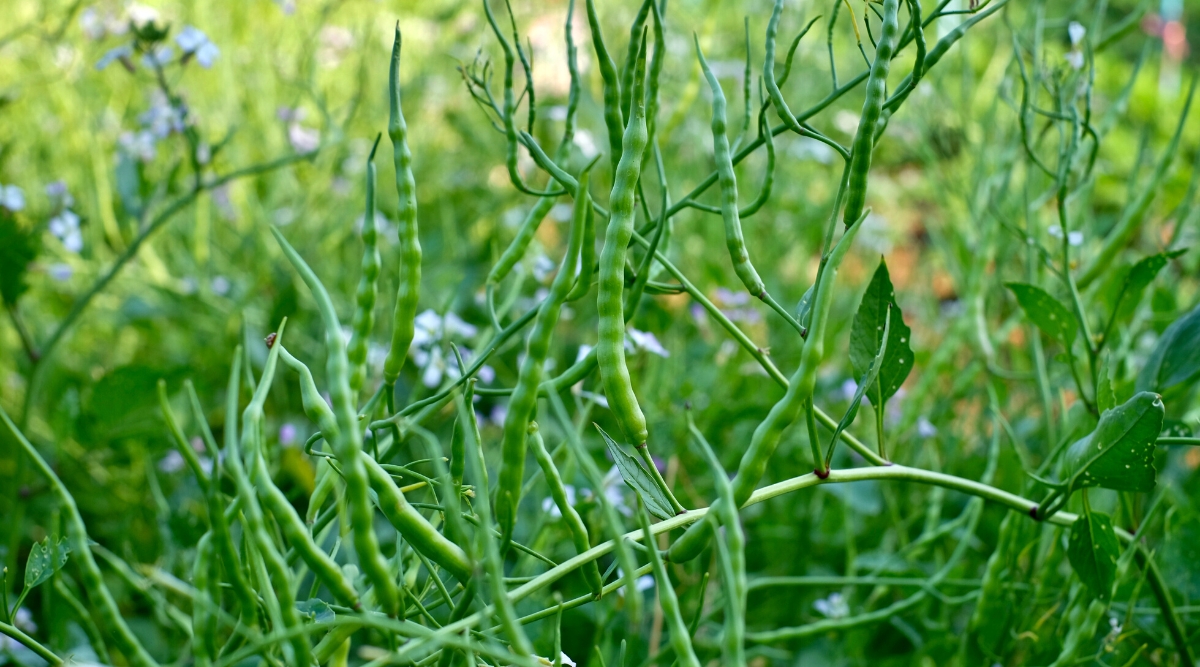
Singara Rat’s Tail
If you ’re unfamiliar with aerial radishes , you might mistakethis rat ’s prat varietyfor a bean ! This plant grows edible seed pods above ground that are eaten instead of the roots as you would with your distinctive Raphanus sativus longipinnatus . The seed seedpod are crispy and a little spicy but are much tame than other radishes .
This flora grows up to 5 infantry tall and 12 feet wide-eyed , with pods ranging from 3 to 12 inch in length . It ’s tolerant of frost and can be spring up from spring to summer . The noodle pods can be eaten crude , cooked in dishes like stir - fries , or pickled .
If you require to impress your booster with a veggie tray full of an raiment of interesting veggies from your garden , this is a great choice . Because this is technically the pre - bolt form of a radish , summertime heat is no issue . You want to peck them betimes , though , so they are n’t woody when you bite down .
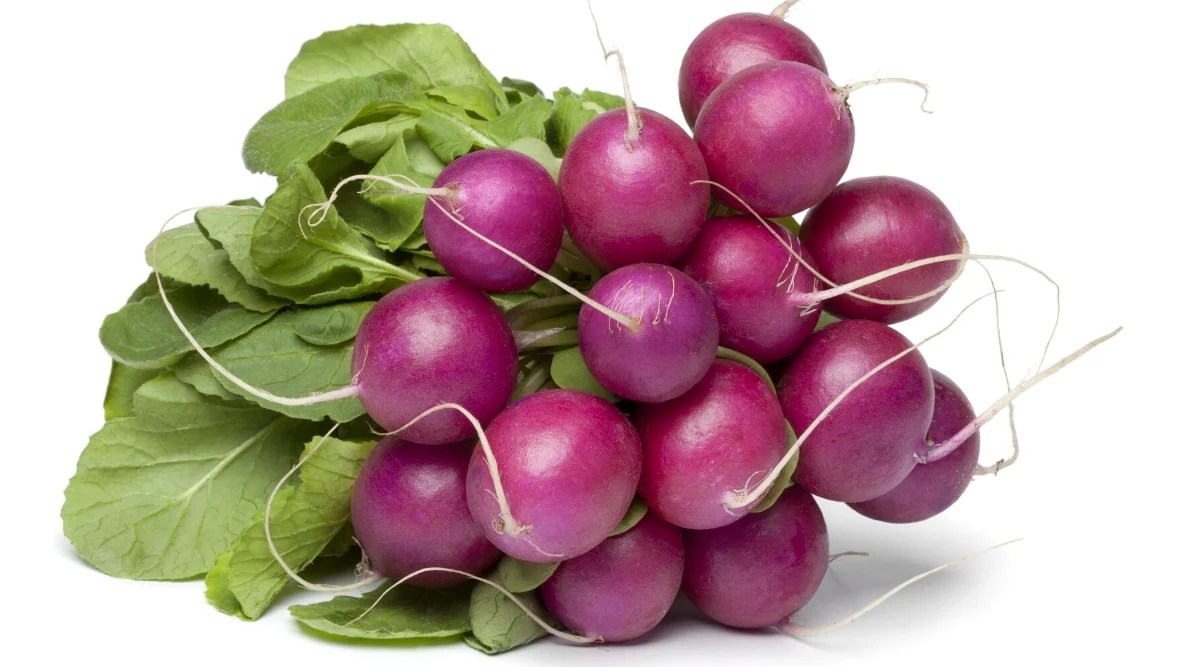
Purple Radishes
royal daikon are sure to grab your aid ! From bass purple to light lavender , these radish plant will add some colour to your garden . These are much like your typical crimson radish , with oodles of pleasant-tasting mustardy flavor .
The departure is mostly in coloring . But both these varieties are averse to summer heat . They much prefer the cool of fall and spring . When you ’re deciding whether or not these are for you , look at that . marked spring and autumn season will yield the best crops .
Malaga
The Malaga radish is a lot like your typical food market stock crimson radish . But , instead of red skin , you get a beautiful plum tree or purple colour that contrast well with the white flesh . you could harvest these radishes in 35 day . The interior bod is sometimes calorie-free pink !
These frost - tolerant radishes acquire best in early leap , and you could plant them until it gets too hot at the offset of summer . This Polish variety will not get sententious if depart after initial maturity . It also is large for those who have longsighted seasons , where ecological succession of Malaga are possible .
The feel of Malaga is typically mild , peculiarly when grown in a longsighted natural spring or fall . In summer , and in exceptionally fond weather , they may take on a juicy relish . secure you reap when the flavor is to your liking .
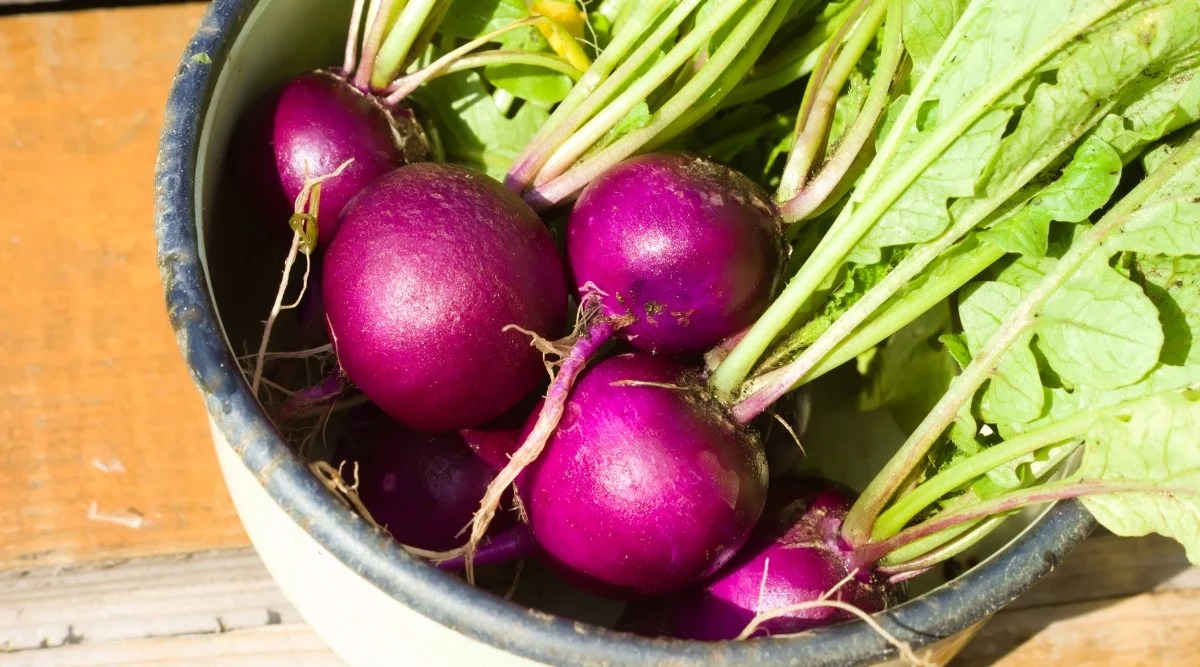
Royal Purple
The Royal Purple radish will rule your garden with its gorgeous purple skin and pest and disease resistance ! They ’re easy to give care for , making them great for beginner nurseryman who need a speedy win to encourage confidence . The spicery is mild and well - balanced with sweetness , making it a delectable choice you ’ll desire to plant again and again .
Sow seeds in early natural spring and later summer , and remain with succession planting until the temperatures become too hot or too cold . You ’ll be able to reap these in just over a calendar month for bring to salads , sandwich , and for pickle and zymolysis .
People sleep together growing these for their taste , and have even had achiever growing them in aquaponic systems . The lenity of relish appropriate those who have sensitivity to spice to enjoy them . allow for them in the ground in warmer weather to pump up that oestrus for those who like it .

Pink Radishes
Radishes are be intimate for their spicy kick , but these pretty pink ace will make you retrieve they ’re dainty and frail . They ’re beautiful to expect at and toothsome to eat — what ’s not to like ? Grow them to bestow some interestingness to your garden , and revel the zesty flavor they offer .
Many of these are frost - kind , but few are heat - patient of . That mean those with a summertime that comes on tight will need to stay on top of their planting and harvest timings . If you will them they can become stringy , and even spicier .
Salad Rose
This Russian radish is begging to be in a salad ! The mild spice is just enough to stand out , but not so much that you wo n’t savour it . It ’s a retentive and slender radish that can get through up to 8 inches foresightful and about 1 column inch in diameter . While most tend towards purplish , they can also be pinkish - purpleness in chromaticity .
This variety show grows well in leap and fall and is frost - tolerant , so you’re able to get a straits start and implant them before the last frost . If you want to use the greens , know that they have multiple applications in salad , sauteing , and steam . They too have a mildly spicy flavor you ’ll love .
When fully grown , Salad Rose radishes slightly resemble carrot . They maintain texture even if they produce longer than 8 inches , stay crispy and light . This might be your next pet variety to grow in springiness and fall .

Chinese Rose
This Raphanus sativus longipinnatus should be embed in later summertime and will be quick in about 60 Day as the atmospheric condition cools down . It ’s a rosy-cheeked Raphanus sativus longipinnatus that can achieve up to 8 inches long and 2 in in diam , and has a savory , peppery flavour . A beautiful brightness level pink skin complement the bloodless build . This one will make any saucer feel refined !
China Rose is a fabled radish with an ancient account . Missionaries who visit China during the 1850s brought it back to Europe . However , the world of this Raphanus sativus is believed to go all the way back to the first wild radish works .
In China , the sprout of the plant life are commonly delight about 6 day after lineal sowing . This practice most in all likelihood start when granger thinned the sprouts to give roots passable space to grow . The smack of this one is bluff , so those with sensitivity to heat should mind !
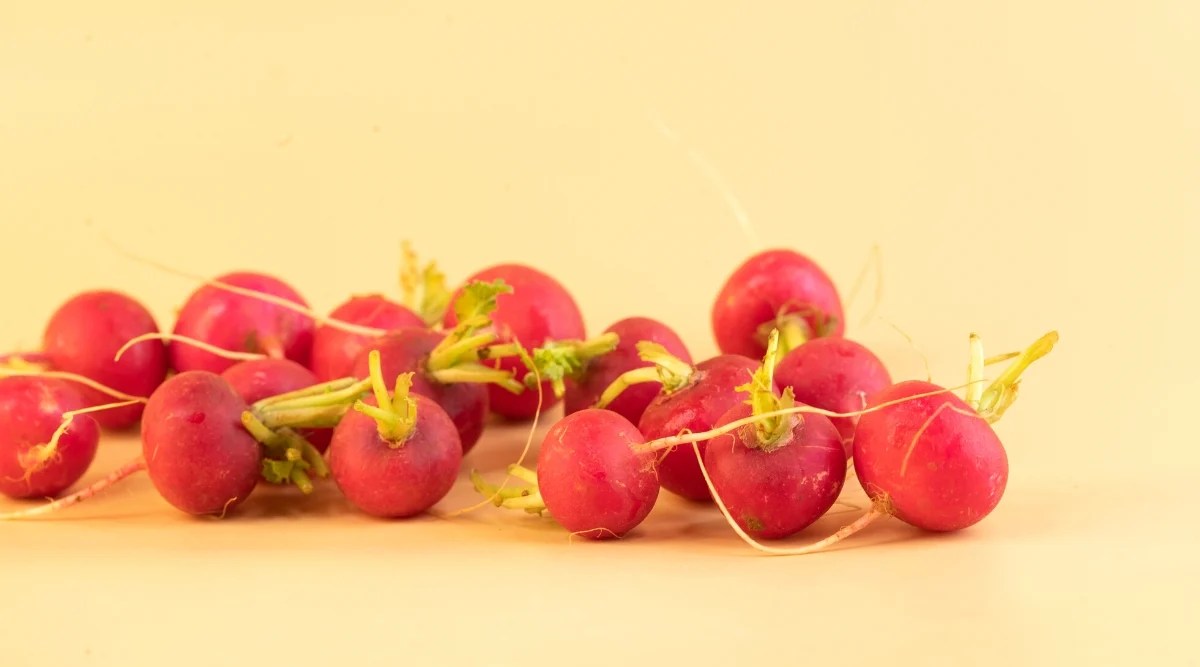
Lady Slipper
If you ’re not a fan of radish spicery , the Lady Slipper is one you should try . This Raphanus sativus longipinnatus gets its name from its oblong shape that ( loosely ) resemble a slipper . It ’s fairly sweet with very petty spice , so it ’s a good first radish to try if you have n’t had one before .
It reaches 1 inch in diameter and 1 to 2 in long and is quick to harvest in as little as 25 day . They ’ll stash away well in the electric refrigerator for up to a few hebdomad , but you need to reap them quickly , or they ’ll turn sententious and problematic to eat .
Because they maturate so quickly , they ’re expectant for gardeners who desire to sell them at market , or even for those who want to taking over sow . In the same vein , interplanting with this one is highly possible as Lady Slipper does n’t take up much space .
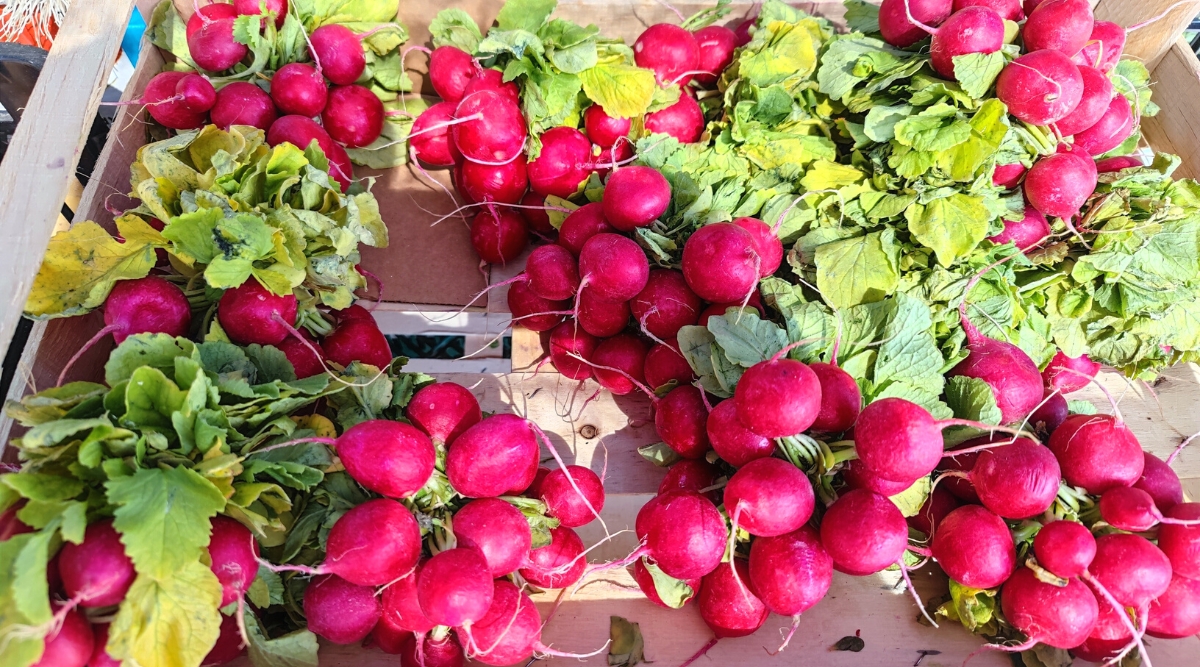
Pink Beauty
The Pink Beauty is aptly named for its rosy skin , but their quick growing time of 22 day makes them even more beautiful ! They ’re mildly gamy and are only 1 in in breadth and length , making them perfect for snacking in the garden .
Plant these radish in early spring and late summertime . They ’re frost - patient of and do n’t like summer heat . Sow them in ecological succession for multiple harvests through spring and fall . If uniformity and reliability are your matter , this is the Raphanus sativus for you !
The size of it of these makes them great for fade and throwing in salads or sandwiches . pickle and fermenting whole or sliced Pink Beauties is doable too . Though the putting surface are reasonably minuscule , they can be added to salad or steamed for run through .

Pink Summercicle
The Pink Summercicle Raphanus sativus longipinnatus has a endearing sugared tang with a number of spice . They ’re oblong and reach up to 5 inches long . Their pink hide cast from light to dark , and they have white anatomy . Despite their name , these radishes ca n’t take the summer heat ! Plant these in the spring and fall to avoid extreme temperatures .
Salads and stir Roger Fry are good hosts to your previous spring and fall harvests . The sweetness of this Daikon variety also pair off quite well with a saltwater in pickling and fermenting . They are n’t peculiarly spicy either , making them beneficial for those who opt a milder Raphanus sativus .
you could set about pull in these out of the ground in 40 days . In areas that continue cool and temperate in give and twilight , sequence sowing may be potential , but avoid that in areas with quickly approach summertime .
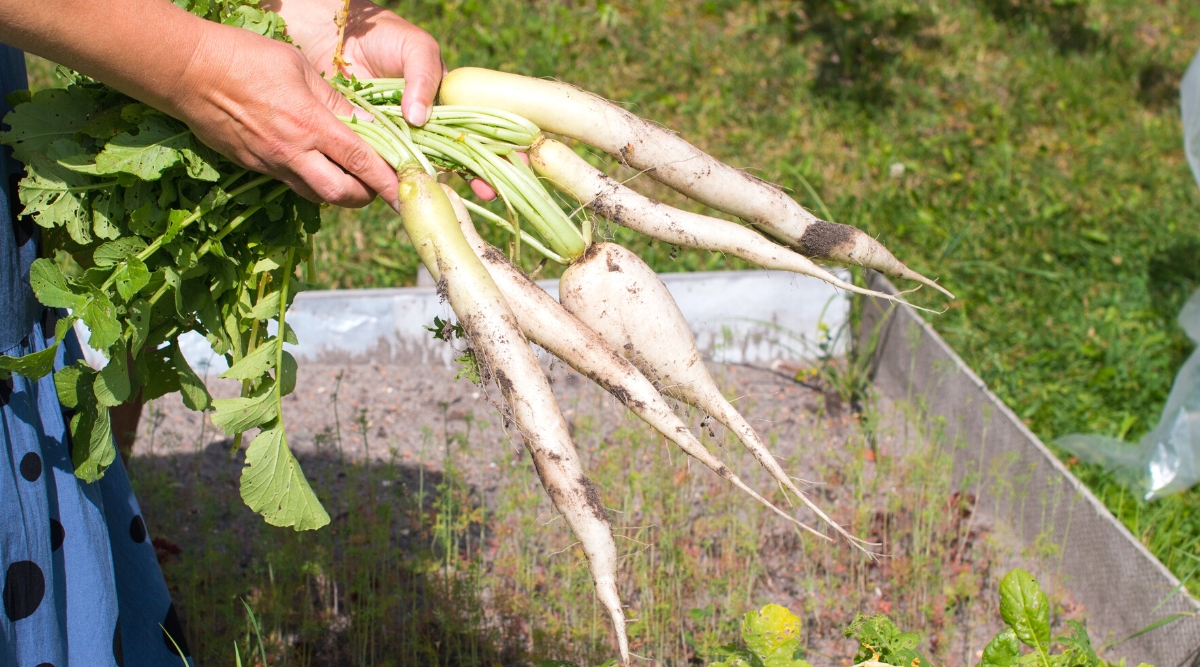
White Radishes
The livid radish class is much like the others : they ’re either ball - shaped or oblong and have ruby-red or snowy flesh . You wo n’t require to miss out on some gorgeous variety in this category — don’t misidentify a white radish for being boring !
Some are intensely spicy , which is bang-up for pickling garnishes , or for salads and sandwich . The traditional Daikon radish strike into this category . They ’re also an fantabulous nominee for those who desire to grow a cover crop of soil - tilling roots ! More on that briefly .
Daikon Long White
The Daikon Long White , often plainly referred to as the Daikon Long , is gigantic . Its theme looks like a expectant whitened cultivated carrot and it reaches up to 14 inch long and a few inch thick ! If youloveradishes and want to check that you have plenty to crunch on , this one is for you !
This one is mostly lily-white but may appear promiscuous unripened at the top with brown spots . The spots are n’t bad , though ; it ’s just a characteristic of being a ascendent vegetable . Plant it in outflow and belated summer and enjoy it make , pickle , or raw . This radish is peppery but meek .
Daikon radishes are supposed to have descent in the Mediterranean and along the coasts of the Black Sea . During the spiciness trade , they most belike made their direction to Japan , China , and other parts of east Asia , where they ’re a staple today .

Mantanghong
Also called a Watermelon Raphanus sativus , the Mantanghong is a cross radishthat is absolutely arresting . Its tegument is mostly blanched with some scant William Green , and sheer it capable will disclose beautiful regal flesh . The feeling of this one is meek and sweet , attracting those who screw radish and those who may be ambivalent .
These Japanese radish grow quite large orb pass 3 inch in diam and up to 1 pound in free weight . It ’s not just the color schema reminding you of watermelons ! Start develop these in late summertime and through fall , as they are wintertime - acquire and ca n’t take the heat .
This picky mixture is a hybrid watermelon radish , bring forth much more uniform roots than other varieties might . In China , watermelon radishes are called vary words that render to “ beautiful heart , ” a nod to their adorable Interior Department .

Minowase Summer Cross #3
No plant is ever trulyperfect , but this one comes close . This hybrid variety normally grow consistent radishes with fluent livid pelt that are all the same size and width . They reach up to 16 inches longsighted and almost 2 pound . This mixed bag has been bred to have heat tolerance , so you’re able to plant it from spring to come down to enjoy the crunch of radish all summertime long .
If mosaic virus is a care for you , note that this one resists it ! Due to its uniformity , both home gardener and marketplace nurseryman can rely on Minowase Summer . The modest relish makes it toothsome for those who ca n’t get enough of radish tang , and for people who could pull up stakes it .
unadulterated in fuss fries , pickling , zymolysis , and make traditional Nipponese culinary art , this radish is aDaikon you do n’t want to miss . Especially if you live somewhere with a short spring , adjudicate it out . Minowase Summer is so good , and drying the rip up flesh will keep it toothsome in computer storage for some sentence .

Miyashige
The Miyashige isa Daikon Raphanus sativus that acquire extra farsighted , normally 12 - 18 column inch long and 3 inch wide . This heirloom variety has whitened tegument and pulp but may sometimes have light unripe tops . farm this wintertime radish in late summer and fall since it like shorter days . uprise them in the spring can be difficult since the days gradually become longer and hotter .
They are traditionally used young in sushi , and mature radish plant are often pickled . you’re able to fix them up and assist them in soups and call down fries too , to give whatever repast a abstemious compaction . This is a Daikon that sour well in the kitchen , and in the garden as a land - tilling cover craw . As the ascendent grow deep , they drive through the soil , breaking it up !
Southern gardeners have found this variety is perfect for their mild tumble season , and it ’s there they develop wide and long . If you find they ’ve plump to ejaculate , no problem at all ! you may glean the vernal seeded player seedcase for pickling or leave them to feed wild birds .
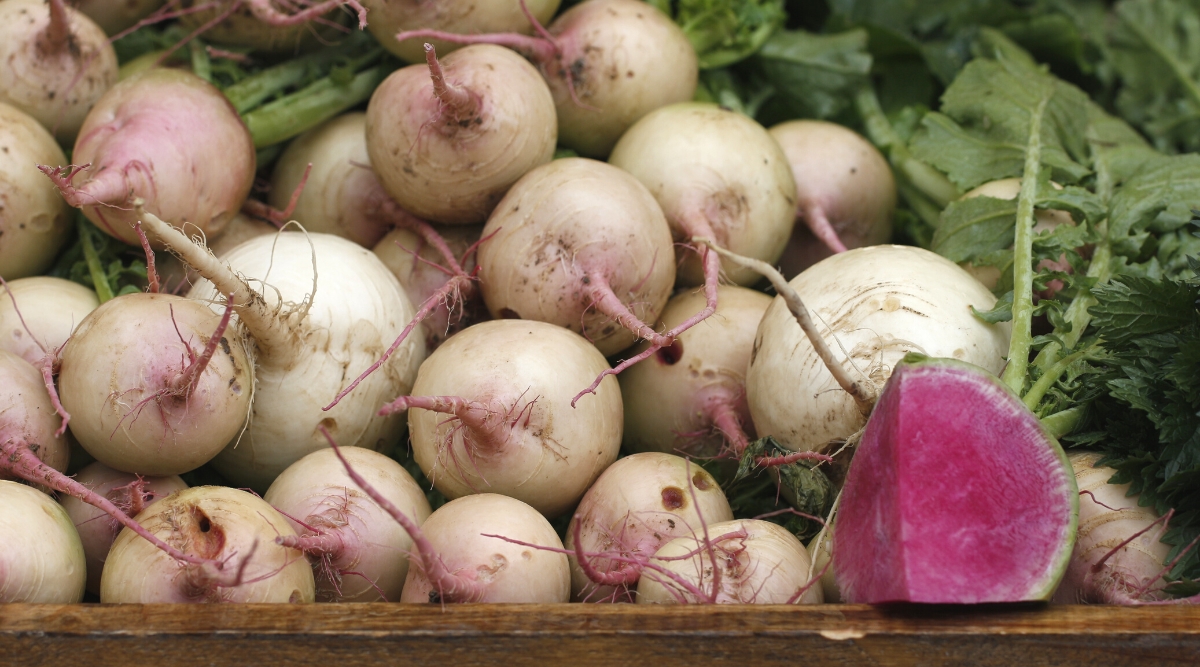
Rido Red
Is the Rido Red snowy or red ? Well , yes ! This stunning globe - work Raphanus sativus has white skin . Cut it clear , and you ’ll see about an inch of lily-white flesh with reddish - purplish flesh in the center . This radish plant is really a workplace of art !
This smorgasbord grows large 4 - column inch spheres and is a bit on the sweeter side , but you’re able to still expect a spicy radish kick . It flourish in outflow and declination , so you may enjoy them throughout the yr . For their variety , they grow quickly and are ready for harvest in just a couple of months . In mild areas you could succession sow in two crops !
Their looks make them keen for food market stalls and vegetable trays , where they tolerate out among other radishes . They ’re beseem for these scene , as well , because of their meek , yet mustardy flavor . That makes Rido Red a superb mid - grade daikon for anyone who considers themselves part of the radish spectrum .

Sakurajima Mammoth
Hungry for radish ? You better be if you ’re planting this one ! This variety truly is a mammoth , with the average size turn over 10 inch in diameter and 15 pounds . It develops a monolithic white or beige globe with plentifulness of leafy greens .
Start the Sakurajima Mammoth in late summer and harvest once the temperature have cooled down . It claim its time and will be ready in 90 days . It ’s frost - liberal but wo n’t do well in freezing temperatures , so project ahead if your first frost comes a bit early .
The history of Sakurajima Mammoth commence at around 1800 on the Island of Sakurajima , Japan . It ’s consider the “ King of Daikons ” all over the world , though . It has been traditionally used in pickle and cooking , but you could eat one bare-ass if you ’d like ! Grow one to direct sizing or crowd them to farm on a regular basis - sized radishes .
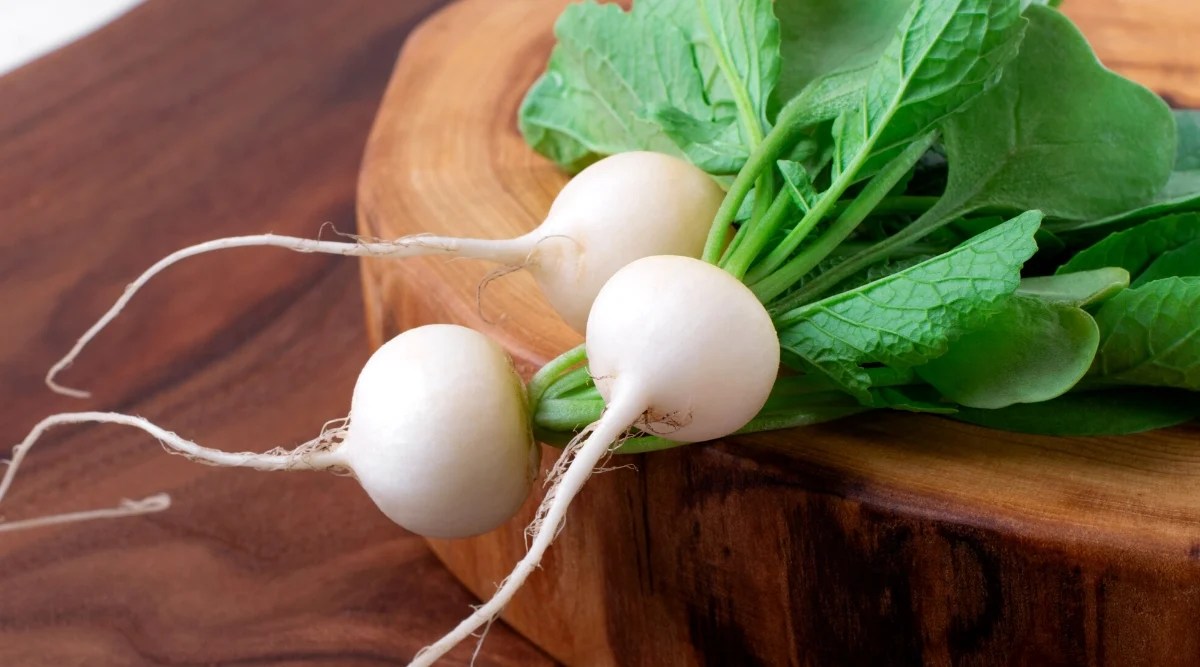
White Hailstone
The White Hailstone radish looks like it ’s fresh from a hailstorm . While most of these white Raphanus sativus take a little foresighted to grow , this one is on the faster side , ready to eat in as picayune as 23 solar day . The 1 - in globe - mold radishes are peppery and mild with a delicious crunch . They grow the best in the leaping and can be ecological succession planted until the weather is too spicy .
Even in cooler areas , White Hailstone will be the first radish you harvest ( most potential ) . After you harvest them , throw them in a salad with their greens for a semi - naughty , crispy , and refreshful luncheon . you could also wilt the leaves and eat them like mustard viridity .
While these do n’t favor warm temperature , if you ca n’t get to your harvest when the rut kicks in , do n’t worry . They ’ll maintain their grain , and they most probable wo n’t bolt . Lots of gardener like togrow these Japanese radish in containers , so do n’t hesitate to plant a few in a 5 - gallon pot if that ’s all you have room for !
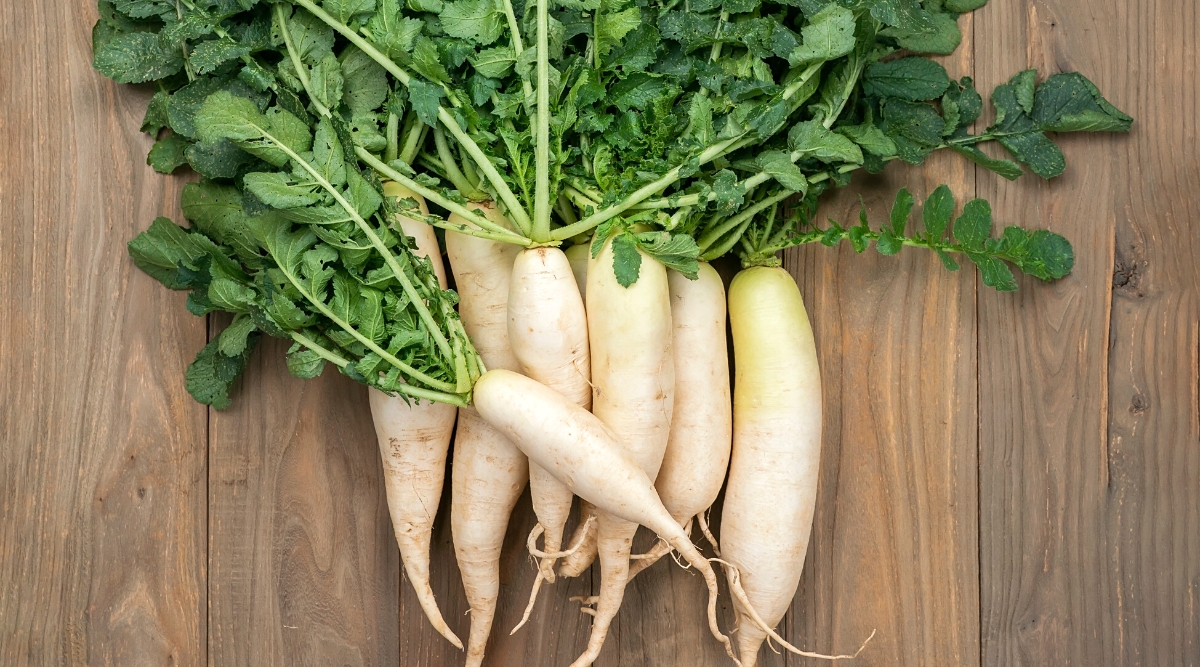
White Icicle
Staying in the motif of glass feel - alikes , the White Icicle Raphanus sativus is supple , average out 5 inch long , and has bland ashen cutis . These radishes are also middling warm , taking about 30 days to be ready to harvest . you may grow them in leaping and fall while the atmospheric condition is cool .
you’re able to eat these with or without their skin , and they ’re delicious when pickled , cooked lightly , or thrown raw into salads . If none of that interests you , slit them thin and dehydrate or fry them to make chips . soup house them nicely , and simply sauteing them in butter and salt makes them marvellous as a side dish .
The history of icicle radishes dates all the elbow room back to the 1400s , when they were first work in what was known then as “ cathartic gardens ” . These gardens were cultivate specifically for scientific field of study , and a bang-up understanding of phytology . This induce them dependable and storied !

Black Radishes
No , these radishes have n’t rotted ; they ’re just dim ! Black radishes are passing nerveless with their contrasting white human body and are say to be one of the savoury kinds of daikon . If you desire a unique plus to your vegetable garden , see no further . They ’re also a great plant to include in a “ goth garden ” where you plant only black plants !
These are rich , spicy radishes — spicier than the canonical root . you could cook them to chasten their intensity , but those who love it should try out fresh one ! We have included one highly rare radish on this tilt , so keep take .
Long Black Spanish
The Long Black Spanish Raphanus sativus is an heirloom from Europe . This is the Raphanus sativus longipinnatus we refer : you in all likelihood wo n’t discover this one in storehouse since it ’s uncommon . The roots get up to 9 inch long and about 2 inches in diam .
This radish is gamey than most , and the spicery intensifies as you consume it . Cooking it will tame the flavour and impart out its elusive fragrance . If you ’re German , you may bed about the practice of eating these as a collation along with your preferred dry pint of beer . They are normally sliced up and salt for this purpose .
Another way to boil down the spicery of the Long contraband radish is to bump off the hide , where most of that sharpness is stored . In the Mediterranean , where they ’re believed to have spring up , they adapt to many unlike clime readily . They are therefore , known for their cold - lustiness .
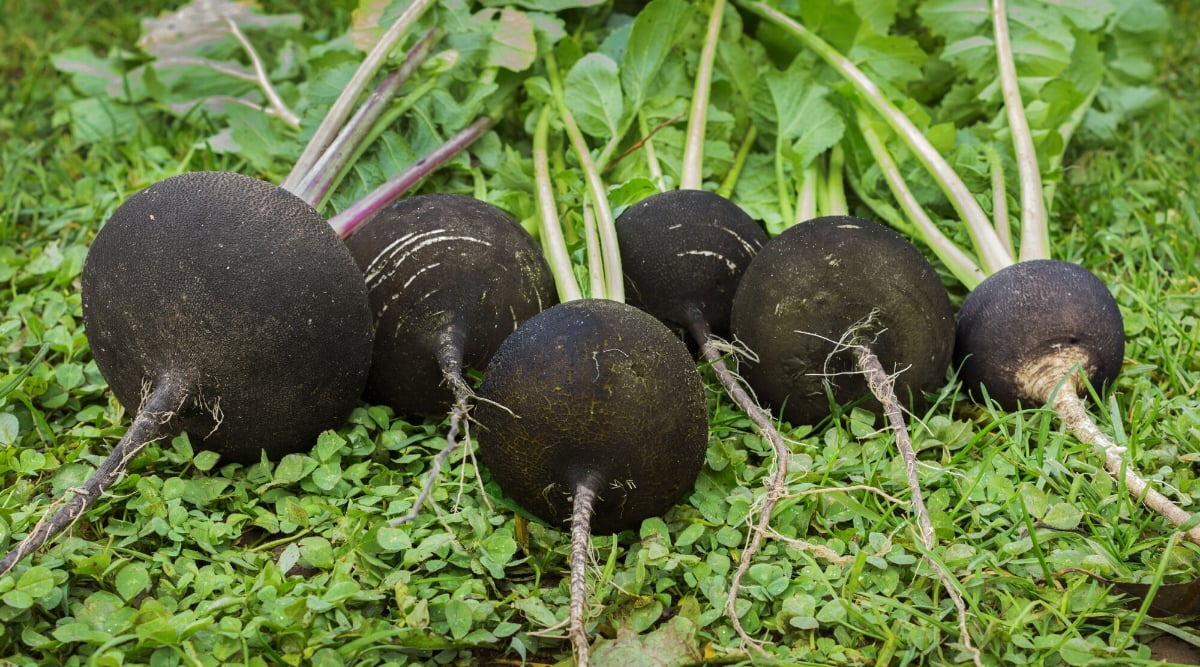
Round Black Spanish
This radish isalso known as the Black Spanish radishand is more plebeian than the long variety show , so you may have better lot finding these seed . This one is also quite spicy compared to other motley . Plant it in late summer so it can suppurate during the cool , short days in late fall . It will be ready to reap in 55 days .
Also make love as “ Noir Gros Rond d’Hiver ” ( which translate to “ Winter Big Roung Black ” ) , the roots require lower lite experimental condition to in good order form . Hence , their winter - loving nature . Like the farsighted black radish we just discussed , part of what make them so enticing is their long warehousing life .
This mixture most likely develop in the Mediterranean as well , and made its direction to the US in the 1800s . It ’s been a favourite of cool weather and temperate nurseryman since . Cook the roots to dampen the hot flavor , or eat them raw for a zesty gripe !
Final Thoughts
Radishes are n’t just the red ones in the grocery entrepot ! There ’s a whole rainbow of colours for you to sample out and savor .
Whether you ’re looking for something to grow in the spring or in the surrender , there ’s sure to be a smorgasbord that will suit your needsandyour manner . Try grow a new colour each season to see which ones stand out most .